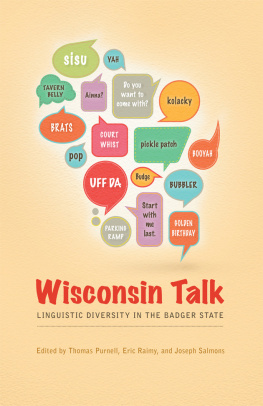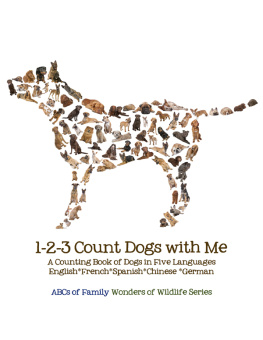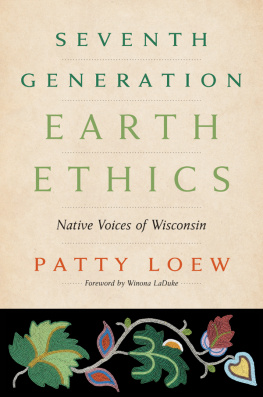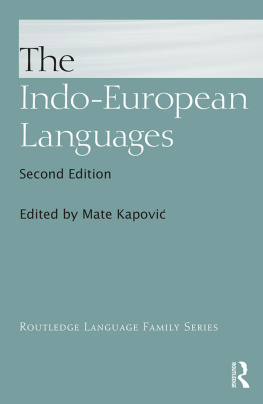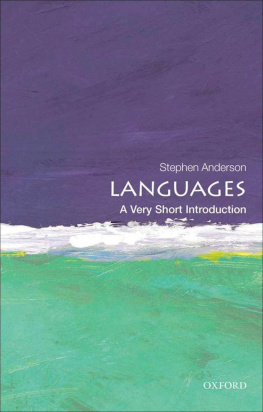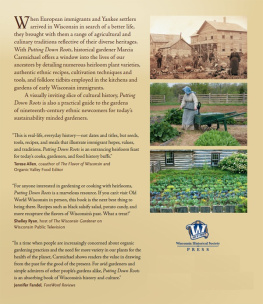WISCONSIN TALK
Languages and Folklore of the Upper Midwest
JOSEPH SALMONS and JAMES P. LEARY , Series Editors
Published in collaboration with the Center for the Study of Upper
Midwestern Cultures at the University of WisconsinMadison
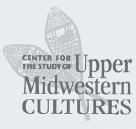
The Tamburitza Tradition: From the Balkans to the American Midwest
RICHARD MARCH
Wisconsin Talk: Linguistic Diversity in the Badger State
Edited by THOMAS PURNELL, ERIC RAIMY ,
and JOSEPH SALMONS
WISCONSIN TALK
Linguistic Diversity in the Badger State
Edited by THOMAS PURNELL, ERIC RAIMY ,
and JOSEPH SALMONS
THE UNIVERSITY OF WISCONSIN PRESS
The University of Wisconsin Press
1930 Monroe Street, 3rd Floor
Madison, Wisconsin 53711-2059
uwpress.wisc.edu
3 Henrietta Street
London WC2E 8LU, England
eurospanbookstore.com
Copyright 2013
The Board of Regents of the University of Wisconsin System
All rights reserved. No part of this publication may be reproduced, stored in a retrieval system, or transmitted, in any format or by any means, digital, electronic, mechanical, photocopying, recording, or otherwise, or conveyed via the Internet or a website without written permission of the University of Wisconsin Press, except in the case of brief quotations embedded in critical articles and reviews.
Printed in the United States of America
Library of Congress Cataloging-in-Publication Data
Wisconsin talk : linguistic diversity in the Badger State / edited by Thomas Purnell,
Eric Raimy, and Joseph Salmons.
p. cm. (Languages and folklore of the Upper Midwest)
Includes bibliographical references and index.
ISBN 978-0-299-29334-5 (pbk. : alk. paper) ISBN 978-0-299-29333-8 (e-book)
1. WisconsinLanguages. 2. English languageWisconsin.
3. English languageDialectsWisconsin. I. Purnell, Thomas C. II. Raimy, Eric.
III. Salmons, Joe, 1956 IV. Series: Languages and folklore of the Upper Midwest.
PE3101.W5W57 2013
409.775dc23
2012037480
Contents
PEYTON SMITH
JOSEPH SALMONS
THOMAS PURNELL, ERIC RAIMY , and JOSEPH SALMONS
KAREN WASHINAWATOK and MONICA MACAULAY
FELECIA LUCHT
3 Immigrant Languages and Education:
Wisconsins German Schools
ANTJE PETTY
KRISTIN SPETH
LUANNE VON SCHNEIDEMESSER
6 Standard English:
What Is It? And What Is It Good For?
ERIC RAIMY
THOMAS PURNELL
SUSAN MEREDITH BURT
9 Spanish in Wisconsin:
Advantages of Maintenance and Prospects for Sustained Vitality
CATHERINE STAFFORD
MARK LIVENGOOD
JOSEPH SALMONS
Foreword
PEYTON SMITH
When I was asked to write a foreword for this book, my first thought was Yah hey, Ill do this once, now. That initial, internal response no doubt came from the years I spent growing up in Sheboygan, Wisconsin, coupled with my intense pride as a lifelong Wisconsin resident. In all seriousness, I was thrilled to be part of this fantastic work, which explores our accents and explains why the way we say things really matters to us. While Wisconsinites may all sound the same to some, as my brother-in-law from California often points out, our distinct community dialects and accents are truly rich and varied, and they make up a strong aspect of who we are.
Wisconsin citizens, scholars, and students of language throughout the country and around the world will find this book to be a great treasure. We should be thankful for the energy and talents of three editors who saw this project through, from inception to publication: Joseph Salmons, Thomas Purnell, and Eric Raimy of the University of WisconsinMadison. Salmons, who is a professor of German and a director of the Center for the Study of Upper Midwestern Cultures, provides insight into dialect, language, and immigration; Purnell, an associate professor of English, applies knowledge of sounds, dialect, and ethnicity; and Raimy, also an associate professor of English, brings understanding of sounds, language change, and acquisition to the work. Eight other contributors bring additional expertise in English, and other languages (native, new, and old), history, social networks, community structure, immigration, and mapping.
This book captures two long-standing traditions at UWMadison: the Wisconsin Idea, a core value that encourages faculty and staff to reach out to the people of the state and beyond, sharing and applying practical and relevant knowledge and expertise; and the publication of seminal works about Wisconsinits geography, fish, birds, mammals, vegetation, and Indian moundsby the University of Wisconsin Press. This book will serve as a long-lasting, valuable resource on the scholarship of language.
Now, full disclosure: I saw the genesis of this book in fall 2008, when the authors first requested funding to work with four Wisconsin communities to better understand how language matters to the people of the state. Frankly, as chair of the UWMadison Ira and Ineva Reilly Baldwin Wisconsin Idea Endowment committee, I was dubious. I typically read as many as 150 top-notch proposals each year from faculty, staff, and students for projects that would form partnerships with community organizations to solve problems or enhance opportunities. Yet the endowment can only fund eight to twelve projects annually. I knew it would be tough for this proposal to compete with a wealth of ideas about improving K-12 education, increasing access to health care, bolstering economic development, and more.
But after reading the proposal, which was developed following community presentations and discussions on language and which proposed bringing together a dozen scholars on Wisconsins languages, I quickly changed my mind. The project would explore fascinating misconceptions, such as that todays immigrants dont learn English as quickly as their grandparents did, that black Americans talk very differently from white Americans, and that native and immigrant language and dialect differences are dying out.
Each belief reveals a problematic interpretation of language, identity, and society. For instance, the belief that earlier immigrants quickly learned English, while current immigrants refuse to do so, is false: Wisconsin Germans often didnt learn English into the third generation; todays immigrants learn it as fast as they can, the editors wrote in their proposal. The issue of how immigrants acquire and use language today has been extremely divisive in many parts of the country, and it continues to influence social, education, economic, and legal policies. Furthermore, research shows that African Americans, contrary to beliefs that they are lazy when it comes to English, carefully balance adapting their use of the language to that of white speakers while also retaining cultural distinctiveness. And lastly, language dialects are increasing todaynot decliningand many of our native languages are experiencing resurgence.
Our committee chose to fund the proposal, and the editors and others began working closely with public libraries, historical societies, teachers, heritage groups, and more in four areas of Wisconsin: Milwaukee, Rhinelander, Mineral Point, and Wausau. Overall, the project noted specific local language issues and concerns, mapped details about the community and its languages, provided knowledge and tools for further linguistic exploration, held public forums in each community, and helped to inform this book.

